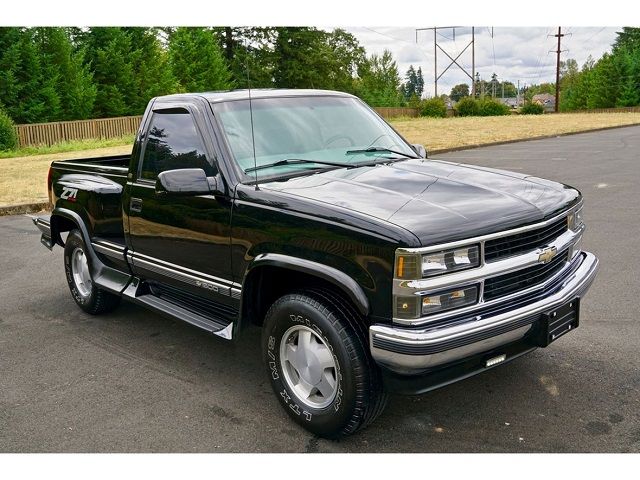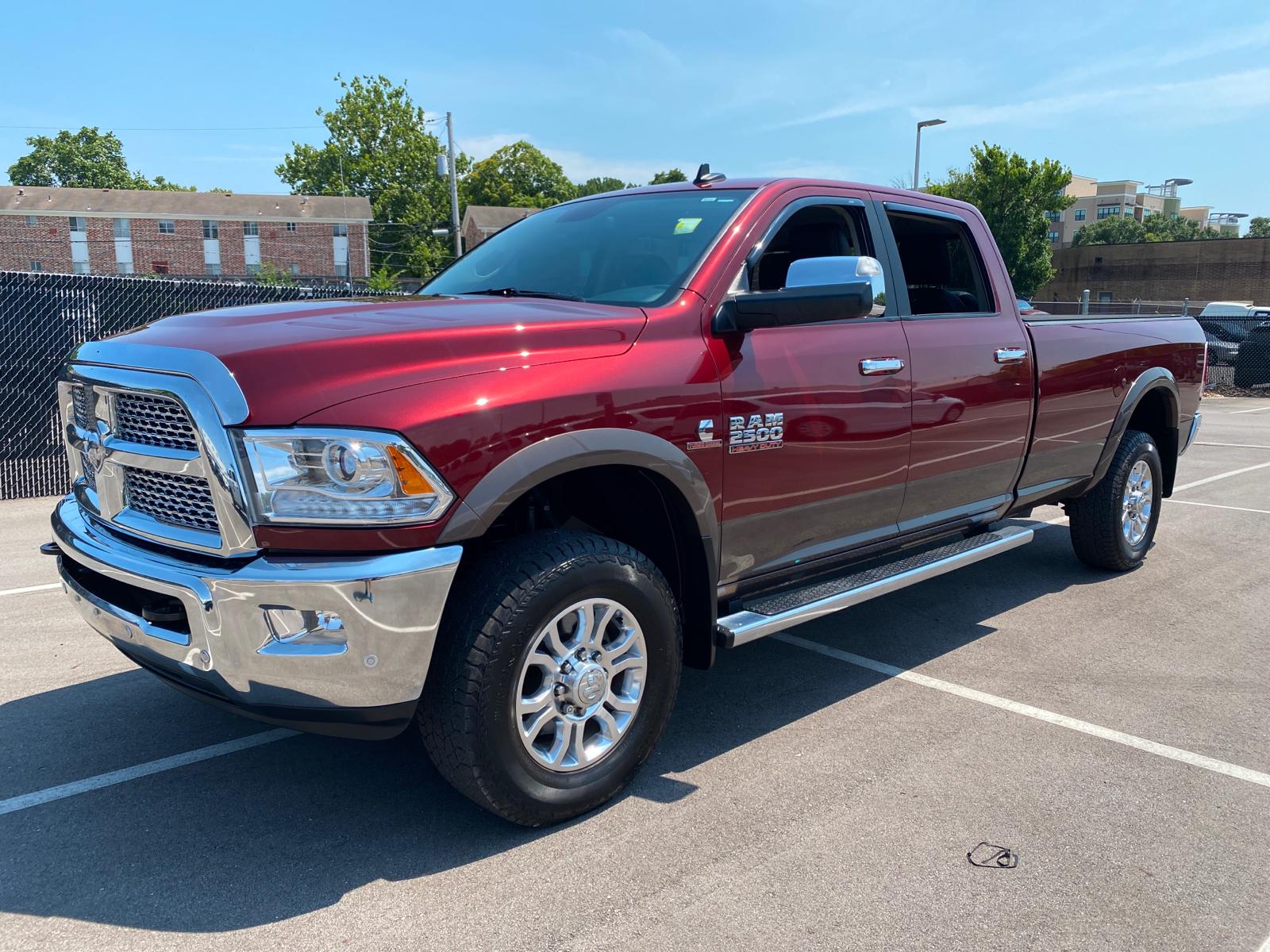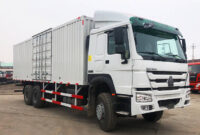Trucks For Sale By Owner Near Me Under $1500: Your Guide to Finding a Budget Workhorse pickup.truckstrend.com
The quest for an affordable, utilitarian vehicle often leads to a specific, challenging, yet potentially rewarding niche: trucks for sale by owner near me under $1500. This isn’t just about finding a cheap set of wheels; it’s about embarking on a treasure hunt for a budget workhorse, a project vehicle, or a reliable parts donor. While the price point might seem impossibly low for a functional truck, for the savvy, patient, and often mechanically inclined buyer, it’s a realm where diamonds in the rough can still be found. This comprehensive guide will navigate the landscape of ultra-affordable trucks, offering practical advice, setting realistic expectations, and equipping you with the knowledge to make a smart purchase without breaking the bank.
Understanding the $1500 Truck Landscape: Setting Realistic Expectations
Trucks For Sale By Owner Near Me Under $1500: Your Guide to Finding a Budget Workhorse
Before diving into the hunt, it’s crucial to calibrate your expectations. A truck priced under $1500 is highly unlikely to be a pristine, low-mileage daily driver ready for cross-country trips without a second thought. Instead, this budget typically buys you:
- Age and Mileage: Expect vehicles from the late 1980s, 1990s, or early 2000s, often with well over 150,000 to 200,000 miles on the odometer.
- Cosmetic Condition: Dents, dings, faded paint, rust (surface or structural), worn interiors (torn seats, cracked dashboards) are common and should be expected.
- Mechanical Condition: While some might be surprisingly solid, many will have minor to moderate mechanical issues: fluid leaks, noisy suspension components, A/C not working, electrical quirks, or even a check engine light. The key is distinguishing between manageable problems and deal-breaking ones.
- Purpose: These trucks are ideal for:
- Light hauling and dump runs.
- Farm or property work.
- A first vehicle for a new driver with mechanical aptitude.
- A project vehicle for a hobbyist.
- A parts donor for another truck.
- A short-term utility vehicle.


This budget requires a buyer who is either mechanically inclined, willing to learn, or has a small additional budget for immediate repairs. It’s an adventure, not a guarantee of trouble-free motoring.
The Hunting Grounds: Where to Find Your Budget Truck
Finding a truck "by owner" for under $1500 requires knowing where to look and being quick to act.

-
Online Classifieds (Your Best Bet):
- Facebook Marketplace: Increasingly popular for local sales. Use filters for "trucks," set your price range to "$0-$1500," and select "For Sale By Owner" if the option is available (or look for private seller listings). Set your location radius.
- Craigslist: The traditional king of cheap, local finds. Similar to Facebook Marketplace, filter by "owner," "trucks," and price. Be prepared to sift through many listings.
- Local Classifieds Websites: Many smaller towns or regions have their own online classifieds boards.
- OfferUp/LetGo (now merged): Another app-based marketplace that can yield local results.
-
Local Avenues:
- "For Sale" Signs: Drive through older neighborhoods, rural areas, or even around mechanic shops. Sometimes, the cheapest deals are found simply by seeing a sign in a yard.
- Word-of-Mouth: Tell friends, family, co-workers, and even local mechanics that you’re looking for a cheap truck. You’d be surprised what surfaces through personal networks.
- Local Bulletin Boards: Check community centers, laundromats, or small-town general stores for handwritten ads.
- Local Auto Repair Shops: Sometimes mechanics know of customers looking to offload old vehicles they don’t want to repair.
Pro Tip for "Near Me": Always utilize the location filters on online platforms. Set a reasonable radius (e.g., 25-50 miles) to ensure you can easily inspect and retrieve the vehicle. Be prepared to travel a bit for the right deal.
What to Expect: Common Models and Their Quirks
While specific models vary by region and availability, certain trucks are more commonly found in this price bracket due to their age, widespread production, and rugged simplicity:
-
Compact Trucks (Ford Ranger, Chevy S-10, Mazda B-Series, Isuzu Pickup):
- Pros: Generally better fuel economy, easier to park, often simpler mechanics, parts are abundant and cheap.
- Cons: Limited towing/hauling capacity, prone to rust in wheel wells and beds, smaller cabs.
- Typical Issues: Engine oil leaks, worn suspension, power steering leaks, minor electrical issues.
-
Full-Size Trucks (Ford F-150, Chevrolet Silverado/GMC Sierra 1500, Dodge Ram 1500 from the 1990s):
- Pros: Greater hauling/towing capability, more interior room, V8 engine options.
- Cons: Worse fuel economy, heavier wear on components, more expensive parts for some repairs, more challenging to work on in tight spaces.
- Typical Issues: Transmission problems (especially older Ford and Dodge automatics), significant frame rust, exhaust leaks, electrical gremlins (e.g., dashboard lights, window motors).
-
Japanese Full-Size Trucks (Older Toyota Tundra/Tacoma, Nissan Titan/Frontier):
- Pros: Often renowned for reliability (even at high mileage), strong resale value (making them harder to find under $1500).
- Cons: Higher demand means fewer truly cheap examples, especially for Tacomas.
- Typical Issues: Frame rust (especially older Tacomas), higher initial price point meaning those under $1500 are often in very rough shape.
The Essential Pre-Purchase Inspection (PPI): Your Safety Net
This is the most critical step when buying a truck for under $1500. Do not skip it, even if the seller promises it’s "just a minor fix."
- Bring a Friend (Preferably Mechanically Inclined): A second pair of eyes is invaluable. They can spot things you miss and provide objective feedback.
- Inspect the Exterior:
- Rust: Crucial! Check the frame, rocker panels, cab corners, bed mounts, and wheel wells. Surface rust is manageable; structural rust (holes in the frame, significant rot) is a deal-breaker.
- Body Panels: Look for mismatched paint, large dents, or poor panel alignment – signs of accident history.
- Tires: Check tread depth (use the penny test), uneven wear (indicates alignment issues or suspension problems), and cracks in the sidewalls.
- Check Under the Hood (Engine Cold):
- Fluids: Check oil (color, level, consistency – milky indicates coolant in oil), coolant (level, color, signs of oil), power steering, brake fluid.
- Belts & Hoses: Look for cracks, fraying, or leaks.
- Battery: Check for corrosion on terminals.
- Start the Engine Cold: Listen for abnormal noises (knocking, ticking, grinding), smoke from the exhaust (blue = oil, white = coolant, black = rich fuel mix).
- Inspect the Interior:
- Dash Lights: Ensure they all illuminate upon startup and turn off as expected. Check for a persistent "Check Engine Light" or "ABS" light.
- HVAC: Test the heater and A/C (don’t expect A/C to work at this price).
- Electricals: Test all lights (headlights, tail lights, turn signals, brake lights), horn, wipers, power windows, radio.
- Seats & Belts: Check condition, ensure seatbelts latch securely.
- Underneath the Truck (If Possible/Safe):
- Leaks: Look for fresh fluid drips or stains.
- Exhaust: Check for holes, excessive rust, or poor repairs.
- Suspension: Look for broken springs, worn bushings, or leaking shocks.
- Drive Shaft/CV Boots: Check for tears or leaks.
- The Test Drive:
- Start & Idle: Smooth or rough?
- Acceleration: Does it pull smoothly? Any hesitation or loss of power?
- Braking: Smooth or does it pull to one side, vibrate, or make grinding noises?
- Steering: Excessive play in the steering wheel? Any clunks or groans when turning?
- Transmission: Smooth shifts (automatic)? Clutch feel (manual)? No grinding or slipping?
- Listen: Pay attention to any new noises – clunks, squeals, hums, rattles.
- Check Documentation:
- Crucial! Ensure it’s a clean title (not salvage or rebuilt) and matches the seller’s ID. Verify the VIN on the title matches the VIN on the truck.
- Bill of Sale: Have one prepared (or use a standard template) to document the sale, price, and "as-is" condition.
Haggling for Value: Negotiation Tips
Even at $1500, there’s often room to negotiate, especially if you’ve found legitimate issues during your inspection.
- Be Polite and Respectful: A good attitude goes a long way.
- Point Out Flaws: Use any defects you found (e.g., non-working A/C, leaky exhaust, worn tires) to justify a lower offer. Have a mental estimate of repair costs.
- Have Cash Ready: Cash is king for private sales. It shows you’re serious and can close the deal immediately.
- Know Your Walk-Away Point: Don’t get emotionally attached. If the price isn’t right or the seller is inflexible, be prepared to walk away. There will be other trucks.
Post-Purchase: What Happens Next
Congratulations, you’ve got your budget truck! Now, for the critical steps:
- Title Transfer: Immediately transfer the title into your name at your local Department of Motor Vehicles (DMV) or equivalent. Requirements vary by state, so check beforehand (e.g., emissions testing, safety inspections).
- Insurance: Secure insurance coverage before you drive it anywhere beyond the initial trip home.
- Immediate Maintenance: Even if it runs, perform basic maintenance:
- Oil and filter change
- Check/top off all fluids (coolant, power steering, brake, transmission, differential)
- Air filter and fuel filter replacement
- Check tire pressure and inflate to recommended levels
- Check all lights, wipers, and horn for functionality.
- Budget for Repairs: Assume you’ll need to spend an additional $300-$500 (or more) in the first few months on unexpected repairs or critical maintenance items.
Common Challenges & Solutions
- Rust: The perennial enemy. For superficial rust, wire brushing and rust encapsulating paint can slow its spread. For structural rust, professional welding is often required, which can quickly exceed the truck’s value.
- Major Mechanical Issues (Engine/Transmission): If the truck needs a new engine or transmission, consider if the cost (parts + labor) is justifiable for a $1500 truck. Sometimes, a junkyard engine/transmission can be a cost-effective solution if you or a friend can do the swap.
- Electrical Gremlins: Often frustrating but can sometimes be solved by checking fuses, cleaning grounds, or replacing worn wiring. Online forums for specific truck models are invaluable resources.
- Parts Availability: For older, common models (F-150, S-10, Ranger), aftermarket parts are usually readily available and affordable. Junkyards are excellent sources for used components like body panels, interior bits, or even larger mechanical assemblies.
Price Table: Examples of What You Might Find Under $1500
It’s impossible to give definitive market prices for specific models under $1500, as condition and local availability are highly variable. However, this table provides examples of what types of trucks you might encounter and their typical conditions at this price point.
| Truck Model (Example) | Estimated Year Range | Common Condition for <$1500 | Notes/Typical Issues |
|---|---|---|---|
| Ford Ranger / Chevy S-10 | Late 1990s – Early 2000s | High mileage (180k+), visible rust (fenders, rockers), minor fluid leaks, worn interior, A/C likely needs repair. | Simple, reliable 4-cylinder or V6 engines. Great for light duty. Parts are plentiful. Watch for frame rust near leaf springs. |
| Ford F-150 (9th/10th Gen) | Mid-Late 1990s | High mileage (200k+), significant body rust, interior wear, potential transmission issues (especially with 4.6L/5.4L V8s), exhaust leaks. | Full-size utility, but often neglected. Check for "death wobble" on 4x4s. Can be a gas guzzler. |
| Dodge Ram 1500 (2nd Gen) | Mid-Late 1990s | High mileage (180k+), notorious for body rust (fenders, bed), dashboard cracks, transmission slips, electrical quirks. | Bold styling, powerful V8s (5.2L/5.9L Magnum). Often cheaper than Fords/Chevy due to known issues. |
| Toyota Tacoma (1st Gen) | Mid-Late 1990s | Very high mileage (250k+), often significant frame rust, faded paint, interior wear, potential minor leaks. | Highly sought after for reliability, so finding one under $1500 means it’s usually in rough cosmetic shape or has known issues. |
| Nissan Frontier (1st Gen) | Early 2000s | High mileage (200k+), some body rust, worn interior, possible exhaust issues or suspension noise. | Durable workhorses, often overlooked. Good value if you find one that hasn’t been abused. |
| Older Compact Pickups (e.g., Mazda B-Series, Isuzu P’up, Mitsubishi Mighty Max) | 1980s – Early 1990s | Very high mileage, extensive rust, potential carburetor issues, very basic amenities, worn out everything. | The absolute cheapest to buy, but may require significant mechanical knowledge and parts sourcing for older, less common models. |
This table provides examples of common finds. Actual availability and condition will vary widely. Always conduct a thorough pre-purchase inspection.
Frequently Asked Questions (FAQ)
Q: Can I truly find a reliable truck for under $1500?
A: "Reliable" is a strong word at this price point. You can find a running and driving truck capable of basic tasks, but expect it to require ongoing maintenance and occasional repairs. It’s more about utility than long-term reliability without further investment.
Q: What are the best places to start my search?
A: Facebook Marketplace and Craigslist are your primary hunting grounds. Filter by "for sale by owner," set your price range, and specify your location.
Q: What are the most common problems with trucks in this price range?
A: Rust (frame, body panels), fluid leaks (oil, power steering, transmission), worn suspension components (shocks, ball joints), electrical gremlins (windows, lights, gauges), and tired engines/transmissions are all common.
Q: Should I bring a mechanic with me to inspect the truck?
A: Absolutely, if you’re not mechanically inclined yourself. If a professional inspection isn’t feasible, bring a mechanically savvy friend or family member. Never buy sight unseen.
Q: How much should I budget for immediate post-purchase repairs?
A: Plan for at least $300-$500 for immediate maintenance and unexpected small repairs. This covers oil changes, filters, spark plugs, and potentially a minor fix like a leaky hose or a brake pad replacement.
Q: Is it worth buying a non-running truck for under $1500?
A: Only if you possess strong mechanical skills, have the necessary tools, and are prepared for a significant project. For most buyers, a non-running truck will quickly exceed the initial purchase price in repair costs.
Q: What paperwork do I need to complete the purchase?
A: You’ll need a clear title in the seller’s name, a bill of sale signed by both parties (including the "as-is" clause), and your valid ID. Check your local DMV’s requirements for title transfer.
Conclusion: The Under-$1500 Truck Adventure
Buying a truck for sale by owner near you under $1500 is an adventure. It’s a journey that requires patience, a keen eye for detail, a willingness to get your hands dirty, and a realistic understanding of what this budget affords. While it won’t be a shiny, new vehicle, for those who embrace the challenge, it can lead to acquiring a functional tool that serves its purpose without draining your bank account. By setting proper expectations, meticulously inspecting potential candidates, and being prepared for post-purchase maintenance, you can successfully navigate this unique segment of the used vehicle market and drive away with a true budget workhorse. Happy hunting!



